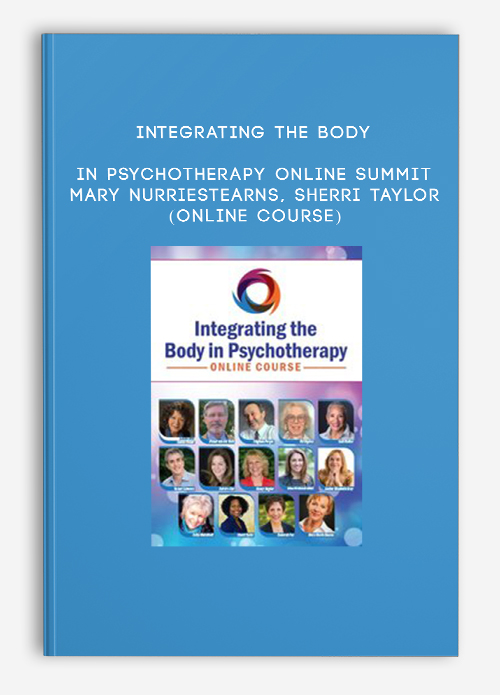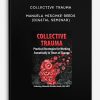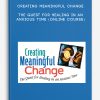

Integrating the Body in Psychotherapy Online Summit – MARY NURRIESTEARNS, SHERRI TAYLOR (Online Course)
$1,679.00 Original price was: $1,679.00.$332.00Current price is: $332.00.
- Description
Description
Integrating the Body in Psychotherapy Online Summit – MARY NURRIESTEARNS, SHERRI TAYLOR (Online Course)
Sale Page
Get Integrating the Body in Psychotherapy Online Summit – MARY NURRIESTEARNS, SHERRI TAYLOR (Online Course) on bestoftrader.com
Description:
Science has shown us that emotions and traumas get stored in the body—not just as memories, but as bodily sensations.
But while we know how important the body is in therapy, many therapists find it difficult to know exactly how to work with those trapped emotions and traumas.
…It can feel so daunting.
What if there were clear and effective ways of working with those trapped emotions that are stuck in the body, even if you’re not necessarily a “body-based” therapist?
Hosted by renowned trauma therapist Janina Fisher, this interactive online summit brings together today’s leading therapists who are at the cutting-edge of understanding what to do when working just with thoughts isn’t enough….
As a clinician, you already know: Treating trauma is hard and exhausting work.
Its impact is complex and far-reaching, as we see from the pain caused by extended isolation and anxiety, as well as deep-rooted racial trauma.
But after years of research and exploration we have the knowledge to effectively heal trauma…
…And it starts by helping our clients transform past trauma imprints through physical experiences that directly contradict the helplessness, rage, and collapse that are part of trauma.
But how do you integrate body-based approaches with traditional talk therapies?
And how do you do this successfully through virtual settings in the age of social distancing?
Join me for this online course, where you’ll get insight from psychotherapy’s top thought leaders and clinical experts, including Bessel van der Kolk, Stephen Porges, Pat Ogden, Gail Parker, Robert Schwarz and more…
Together, they’ll show you the practical, evidence-based somatic strategies you need to improve therapeutic outcomes and how you can adapt their proven tools to your virtual practice.
Don’t wait to join me for this one-of-a-kind online course and discover how you can integrate the body in psychotherapy to help your clients find sources of joy, creativity, meaning, and connection — all the things that make life worth living.
~ Janina Fisher, PhD
Dr. Bessel van der Kolk will show you how to connect neuroscience, trauma research and clinical practice in your therapeutic work.
- The imprint of trauma on the brain, body and nervous system
- The keys to overcoming trauma
- Body-based practices to help clients re-establish ownership of their bodies and minds
Scientific evidence reveals how to help your clients feel safe enough to get to the REAL issues — so they can finally heal from trauma, depression, addiction and other mental health challenges.
- How trauma and stress rewire and disrupt your clients’ nervous system
- Tools to promote feelings of safety
- Why deficits in the Social Engagement System are core features of psychiatric disorders
- Harnessing the power of neuroception in therapy
The body’s intelligence is largely an untapped resource in psychotherapy. Yet the story told by the “somatic narrative”—gesture, posture, prosody, facial expressions, eye gaze, and movement—is arguably more significant than the story told by the words.
- Why movement and posture are important targets of intervention
- How to use mindfulness to tap the wisdom of the body (embedded relational mindfulness)
- Using movement to process traumatic memory and support adaptive relationships
The emotional wounds of race-based trauma land in the body. The resulting pain is not a cognitive experience and recovery cannot occur by talk therapy alone — in fact, talking about it can be re-traumatizing.
- How Race-Based Traumatic Stress and PTSD are different
- The physiology of emotion
- Using Restorative Yoga to support embodied awareness and enhance well-being
Despite the feeling of being irretrievably damaged, all humans have a brain capable of visualizing or imagining experiences of acceptance, closeness, and comfort that evoke the same somatic sensations associated with early secure attachment.
- Why dissociation becomes a survival strategy
- Integrating visualization tools to develop a felt sense attunement
- Using somatic experience to foster internal attachment to clients’ most deeply disowned younger selves
- Strategies to increase self-compassion for dissociated parts
Learn how you can use Emotional Freedom Techniques and other Energy Psychology (EP) approaches to rapidly down regulate the body — so your clients can better process and respond to stressful and traumatic events.
- Understanding the science and research of energy psychology
- How to use Energy Psychology tools within a trauma informed framework
- The simple EP protocol you need to support healthy boundaries
- How the 4 steps of the Emotional Freedom Technique process trauma
This presentation presents the Becoming Safely Embodied model and its integration of ancient traditions from the yoga and mindfulness world into attachment theory and psychotherapy.
- The step-by-step guide to building inner structure
- Using somatic interventions to transform fears, blocks, and resistance into motivation
- Using your client’s body language to understand triggers
- Tools and strategies to help clients tolerate the emotional intensity that healing requires.
Somatic Experiencing® offers approaches that allow us to help clients move from the disorganization of unmetabolized trauma responses to the organization of a coherent, regulated system.
- The importance of embodied presence for reinforcing client wholeness
- Cultivating a sense of benevolence in response to trauma’s impact on the body and psyche
- Exploring the elements of Somatic Experiencing
We live in a time of collective trauma. It is a shared experience that impacts the psychological and somatic health for both clients and therapist. This presentation will provide clinical tips on how to utilize somatic interventions for both client and therapist.
- The 3 essential somatic tools all clinicians need
- Why you need to compose a personal trauma narrative within the collective trauma context to relate to clients
- Key somatic techniques to reconnect with one’s innate somatic knowledge
The most essential ingredient for client co-regulation is therapist self-regulation. That’s why this presentation will share embodied breath, somatic and movement practices that offer stabilization, grounding, and state-shifting for both client and therapist well-being.
- Using Restorative Movement Psychotherapy and Polyvagal-informed Dance/Movement Therapy in clinical practice
- Practices for regulation and reciprocity
- Grounding and stabilizing practice
- Enhancing interoception practice
NLP online course
So what is NLP?
NLP stands for Neuro-Linguistic Programming. Neuro refers to your neurology;
Linguistic refers to language; programming refers to how that neural language functions.
In other words, learning NLP is like learning the language of your own mind!
NLP is the study of excellent communication–both with yourself, and with others.
It was developed by modeling excellent communicators and therapists who got results with their clients.
NLP is a set of tools and techniques, but it is so much more than that.
It is an attitude and a methodology of knowing how to achieve your goals and get results
More Course: NLP – HYPNOSIS – PHILOSOPHY













